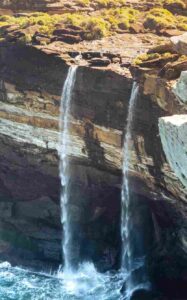
For centuries, the fishermen of Pingtan didn’t just build houses—they coaxed fortresses from the island’s bones. The ancient Shitou Bao (Stone Fortress) technique, perfected over 700 years, created homes so sturdy they withstood typhoons that flattened concrete buildings. Today, only three elderly masters remain who still hear the “song of the stone.” This is the story of a vanishing craft that shaped Pingtan’s soul—and the desperate race to preserve it.
The Language of Granite
Master Huang Delin, 79, squats beside a granite slab in Tannan Village, his calloused hands dancing across its surface. With a practiced ear, he taps the stone—once, twice—then nods. “This one will face the sea,” he declares.
The Stone Selection Ritual:
- Tidal Timing: Quarried only during spring tides, when “the granite sleeps” (less prone to cracking)
- The Ping Test: A clear ting means strength; a dull tong warns of hidden fractures
- Vein Reading: Master Huang traces mineral streaks like palm lines—”This diagonal vein will outlive your grandchildren”
Nearby, a half-built wall leans precariously seaward. “Not a mistake,” laughs Huang. “Eight degrees—just enough to make typhoons slip off like angry dragons.”
Engineering Without Mortar
Pingtan’s stone houses defy modern physics through:
1. The Jigsaw Puzzle Method
Each granite block is carved with interlocking grooves so precise that:
- A 1-yuan coin can’t slip between stones
- Walls self-strengthen under pressure (unlike rigid concrete)

2. Seaweed Mortar
A paste of:
- Crushed Sargassum (harvested during autumn tides)
- Kiln-burned oyster shells
- Fermented rice water
“The saltier the air, the harder it sets,” explains Huang, scraping a 300-year-old joint still intact.
3. Whalebone Architecture
Rooflines mimic humpback spines to:
- Channel rainwater into hidden cisterns
- Create wind tunnels that neutralize gales

Caption: Master Huang demonstrating the tongue-and-groove technique—no metal or mortar used.
The Last Apprentices
At 23, Lin Wei is the youngest stone mason in Fujian—but his apprenticeship came at a cost:
Modern Compromises:

- Uses a laser level alongside traditional plum bobs
- Charges ¥1,500/day (vs. ¥300 for concrete work)
- Only restores old houses—refuses new builds
“Developers want granite facades with steel guts,” Lin spits. “That’s just a stone coffin.”
The Knowledge Crisis:
- 1950s: 200+ masters
- 2024: 3 true practitioners remain
- 1 in 5 stones in new “traditional” houses are fiberglass fakes
Where the Stones Still Sing
1. Xiangxiang Village
- 17 intact stone houses (one accepts overnight guests)
- Nightly “stone tapping” demonstrations

2. The Nanzhai Workshop
- Try carving grooves under Master Huang’s watch
- Secret viewing platform for typhoon testing
3. Abandoned Quarries
GPS: 25.519°N 119.812°E
- See half-cut stones frozen in time
- “Library” of rejected rocks (each with its story)
A Future Written in Stone?
The Pingtan government now offers:
- ¥50,000 annual grants to apprentices
- “Living Heritage” tags for authentic homes
But Master Huang remains skeptical, patting his wall: “This one took 12 years to build. Who today has that patience?” As waves crash against the seawall, the stones seem to whisper back—but fewer and fewer remain to listen.

